(Somewhere USA)
Traveling between camps is generally an all day event. Things need to be done inside and outside the RV before departing, and again upon arrival. Anticipation for the journey begins with planning the route and destination a few days ahead. On moving day, the excitement builds as hitch-itch takes hold.
Preparing to Leave Camp
After breakfast, cleaning of the interior starts with the galley and head. The floor is swept and vacuumed too. Items that could move around during travel are put away; things like cutting board, flower vase, laptop, camera, kitchen tools, pots and pans, ladder and lawn chair, electric space heater or fan. The pantry door is locked, the stove cover is lowered, and all cabinets and drawers are secured. Any open windows or vents are closed and locked.
Next, the cab is prepared for travel. The insulating comforter and windshield reflector are packed away; and the privacy curtain is pulled back and tied in place. Then, it is stocked with drink and snack, iPod touch, cell phone, clipboard with notes, maps, etc. The new organizer is appreciated now. My backpack with art supplies is placed in front of the passenger seat.
Outside, the electric cable is unhooked from the power post and stowed, engine fluids are checked, propane level is noted, air pressure in tires is verified and topped up if needed, mirror positions are checked. I roll off the leveling blocks and stow them. Then, a last minute walk-around is made to be sure all is OK. The entry step is put up. And, a final look-see inside is made to be sure all is ready.
On the way out, the waste tanks need to be dumped. First the black water goes, with a double flush, and putting one inch of water in the bottom to ensure no stickies. Then the gray water is flushed. During the process, the dump valves are greased if needed. The sewer hose is rinsed out and stowed, and the area is washed down. The green water hose used is drained, wound-up with the ends attached together and placed in a plastic bin. Make sure the valve caps are re-attached. Finally, the toilet seat is lowered, and hands are washed with sanitizer.
When preparations are complete, it’s time to roll on down the road toward the next camp. This is the fun part; cruising the highways and enjoying the scenery.
Errands Between Camps
Timing of my departure depends on the distance to be traveled, and on what needs to be accomplished along the way. Stops for gas and groceries are pretty common. But, things like getting propane, doing laundry, or visiting the post office for general delivery mail are less frequent. Those additional tasks add time to the trip, so they have to be considered and planned into the route.
My goal is to reach the new camp around 2-3pm. At most campgrounds, check-out is noon-2pm, and check-in is no later than 4pm. So, I must stay put long enough to do my chores; but, leave soon enough to run my errands and still arrive at the next camp in the early afternoon.
Arriving at New Camp
Some camps are self register; but, others require stopping at a booth before entering. Once in, the first task is to find a site that is fairly level and has a nice view, sun when cold or shade when hot.
Once the site is chosen, I check the electric post for clean power and adequate voltage; it’s usually OK. But, I have found bad ones and had to move to another spot. Next, is to level the rig using the Lynx Leveling Pads, and chock the wheels to prevent rolling. I never hook-up to the water spigot. If fresh water is needed, I fill the tank with a potable water hose and filter.
At this point, I may have to go to the self-register kiosk to pay for my stay. The form usually asks for the site number; so, choosing the site first is necessary. Most places ask you to complete registration within a half-hour of arrival.
Upon my return to the rig, the entry step is lowered and I go inside to unpack my things. The stove is uncovered, counter basket and cutting board placed. My laptop computer is set-up, flower vase and nick-knacks are positioned on the rear window shelf. Devices used in the cab are moved to the lounge. If needed, the windshield reflector is installed. Later, the insulating comforter will be placed to isolate the cab from the interior of the coach. It makes heating and cooling much easier.
There’s a lot to do on moving day. But, once all the tasks are completed, I can rest and have a bite to eat. When satisfied, I will often take a walk to see my new environs. A new camp means a fresh start, and more adventures.
Camp: From one campsite to another
Scene: Camp, blue highways, various landscapes
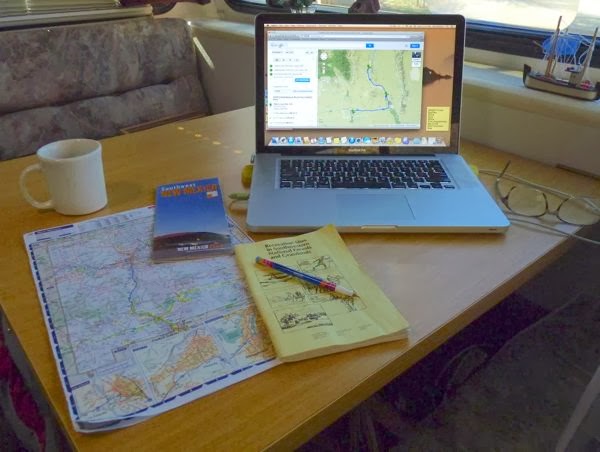
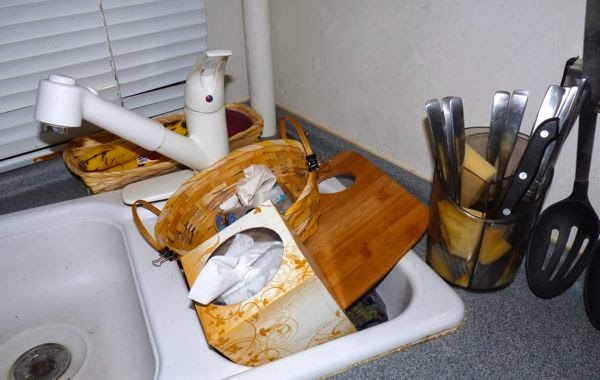
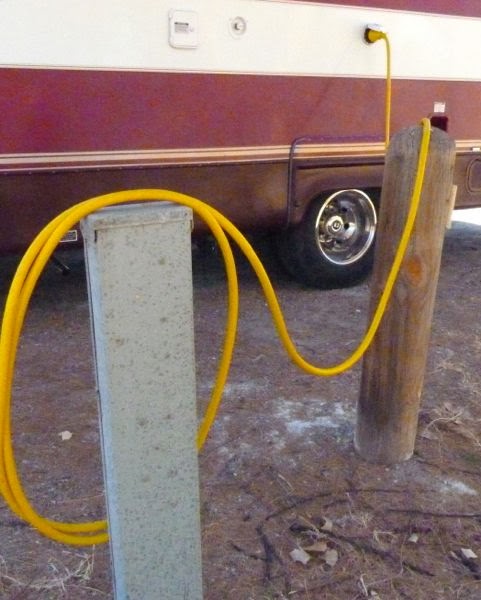
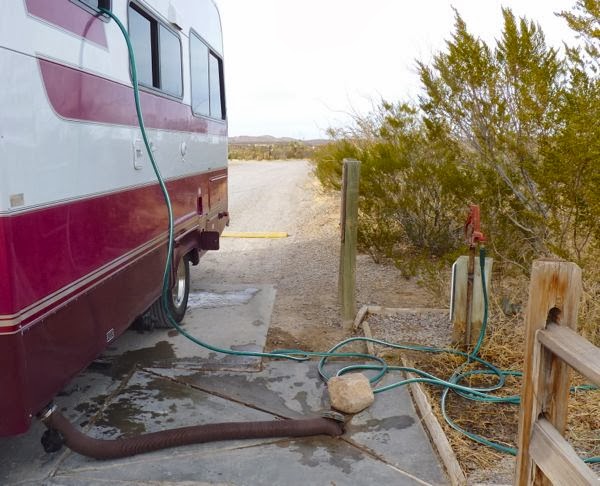
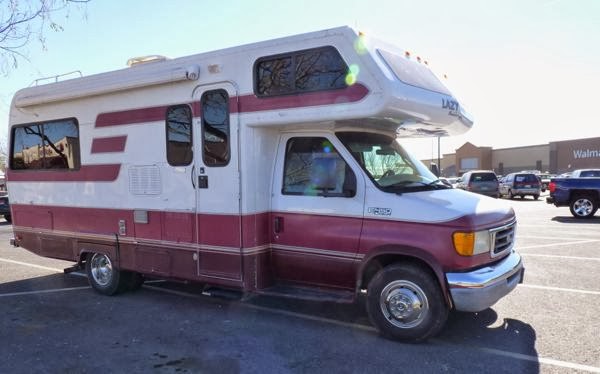
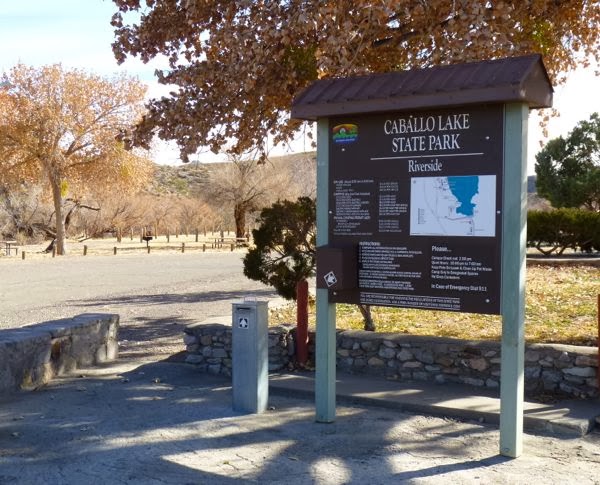
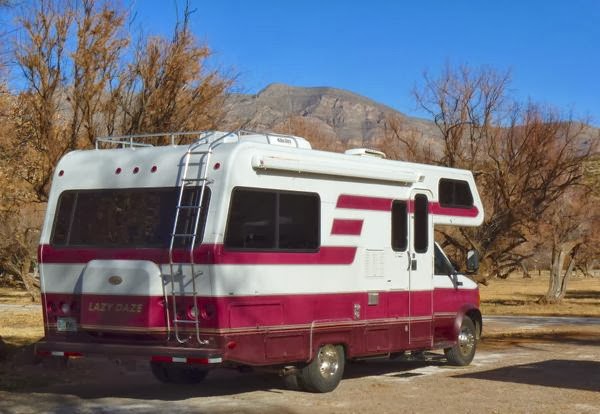
Been meaning to tell you I like your featured painting!
Thank you Melinda. It’s always nice when someone appreciates the paintings. If you click on it, you will be taken to a gallery of more paintings.
You should/could try Big Bend, Texas. Much camping outside and inside the park. We gave switched to a camper also and trailer our sidecar. Had to be 4×4! F350 with a Northern Lite slide in. Much smaller than you but I like tight spaces. We are outside 99% of the time anyhow. Let us know if ever near by. You can paint “Mule Ears”, “Santa Helena Canyon” and so much more. Stay well. Ara and Spirit
Thanks for commenting Ara. I spent a week in that area in November; Big Bend then Terlingua and Marfa Lights on the way out. See my posts. Thought about you when I passed by on 118. I need to go back again, so perhaps I’ll look you up.